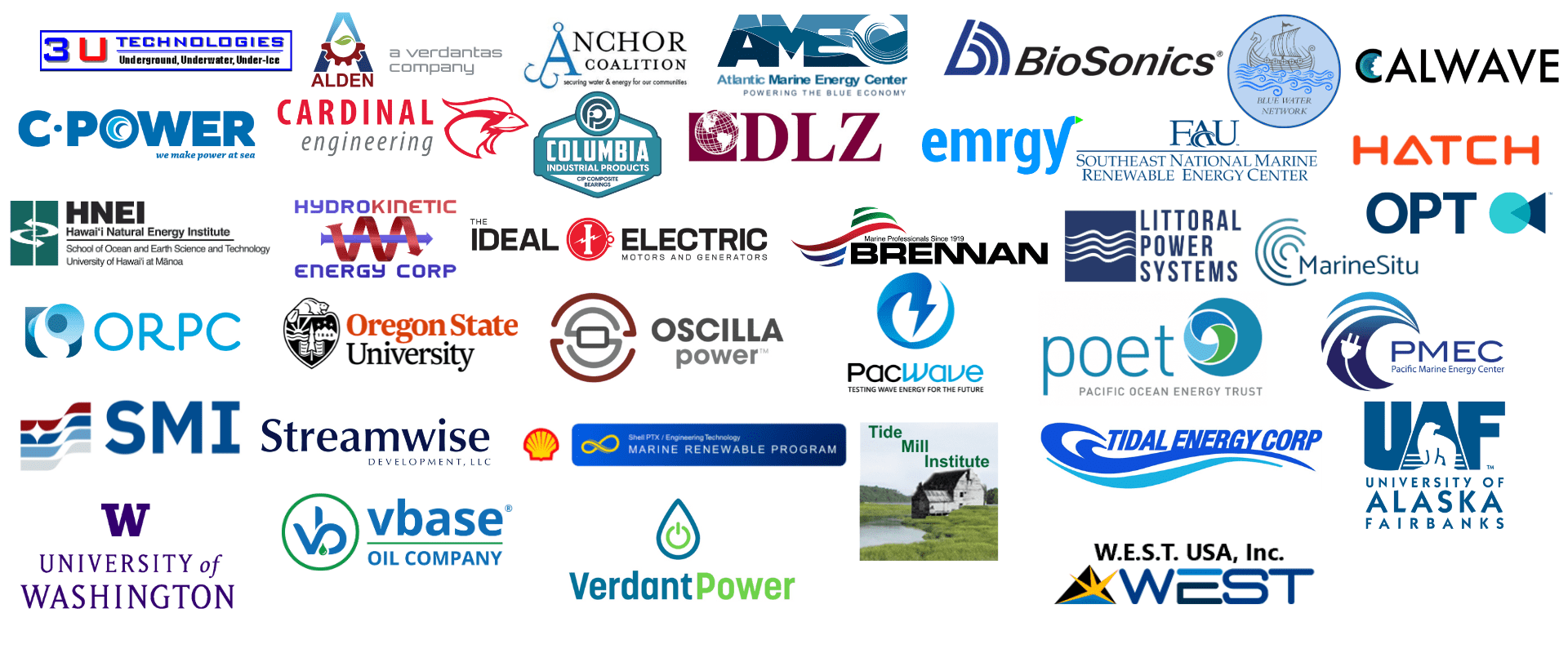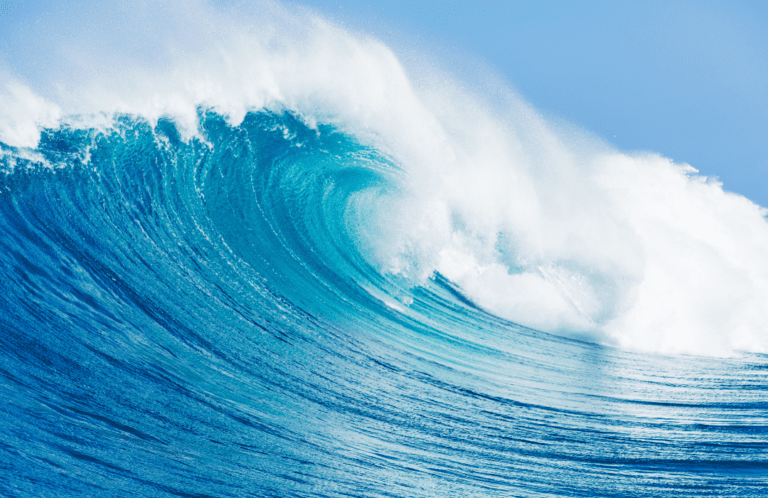
Understanding the Technologies
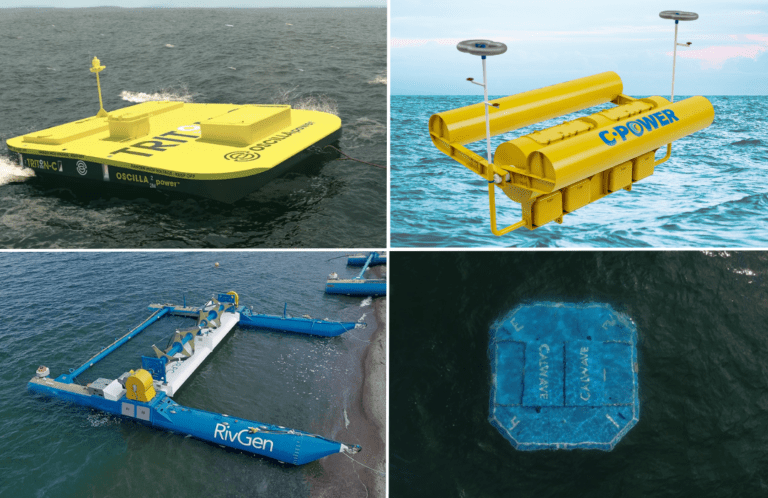
What’s Happening in the U.S.
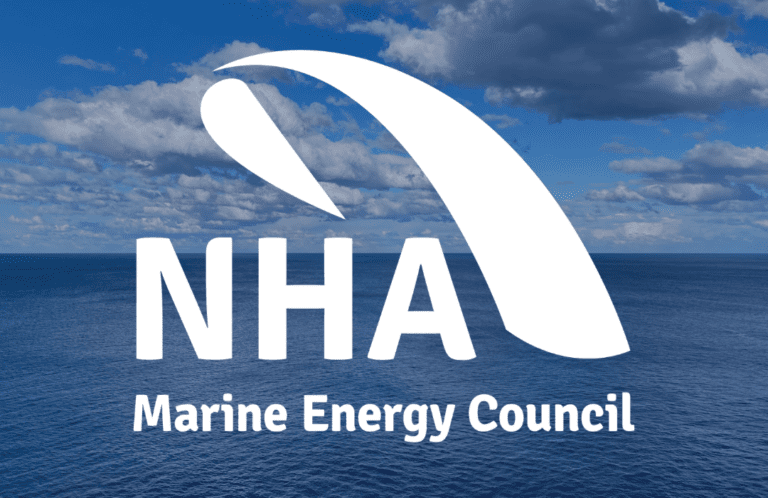
NHA Marine Energy Council
Stay Connected with Marine Energy
POWERHOUSE: Marine Energy Insights
Stay up-to-date on the latest Marine Energy insights
Learn More about Upcoming Events
About Marine Energy in the U.S.
Marine energy technologies — powered by water-based renewable resources such as currents, tides, and waves — are undergoing rapid innovation. These technologies will be critical in helping to reach 100% clean energy targets and related climate change goals by 2035.
The National Hydropower Association’s Marine Energy Council (MEC) works with private sector companies, academia, and government partners to:
- Encourage the commercialization of marine energy technologies
- Raise awareness of the industry’s considerable potential to create good paying jobs and to secure an affordable, reliable, and environmentally friendly energy future.
In the United States, demonstration projects and research supported by the U.S. Department of Energy show that marine energy technologies will provide clear and competitive benefits to the electric system and facilitate off-grid “Blue Economy” market opportunities.
Services related to deployment of marine energy technologies – including resource assessments, project feasibility studies, and site selection studies – can be a significant source of economic activity and revenue for U.S. companies.
U.S. marine energy resources are significant and geographically diverse. According to the Marine Energy in the United States: An Overview of Opportunities, the fifty-state total technical resource of at least 2,300 terawatt-hours (TWh) per year is equivalent to 57 percent of total electricity generated in 2019 and could power approximately 220 million homes.
This does not include the significant potential for Ocean Thermal Energy Conversion and salinity gradient differentials.
For comparison, total solar generation in 2019 was 103 TWh, 2 percent of all U.S. electricity generation.
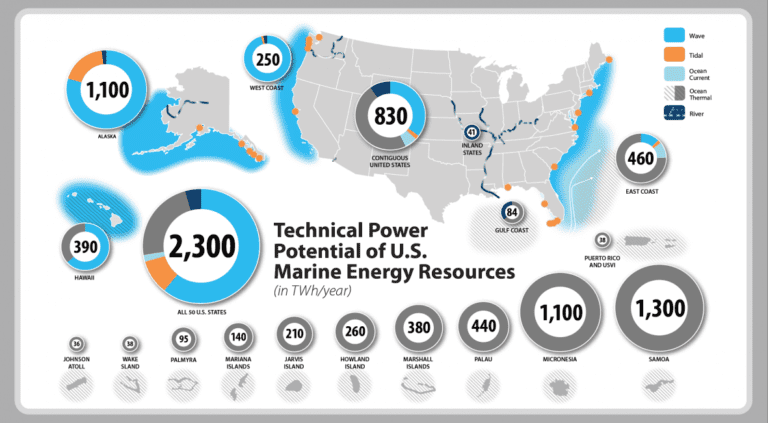
Following the NREL “Marine Energy in the United States: An Overview of Opportunities,” the NHA MEC developed a U.S. Marine Energy Commercialization Strategy calling for domestic marine energy deployment targets of at least 50 MW by 2025, 500 MW by 2030, and 1 GW by 2035.
Meeting these deployment targets will increase economic growth, create thousands of high value jobs, support the clean energy transition, and promote exports in manufacturing and related services.
KEY Marine Energy Reports
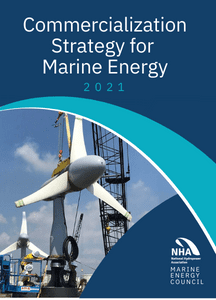
Understanding the Technologies
Marine energy technologies are undergoing rapid innovation in the U.S. These technologies will be critical in helping to reach 100% clean energy targets and related climate change goals by 2035.
Globally available marine energy resources are vast, reliable, predictable, and environmentally friendly. The International Energy Agency (IEA) predicts that by 2050 over 300 gigawatts (GW) of marine energy capacity will be installed globally, resulting in:
- $35 billion of investment
- 680,000 direct jobs created
- Reduction of 500 million tons of CO2 emissions each year
In the United States, demonstration projects and research supported by the U.S. Department of Energy show that marine energy technologies will provide clear and competitive benefits to the electric system and facilitate off-grid “Blue Economy” market opportunities.
Services related to deployment of marine energy technologies – including resource assessments, project feasibility studies, and site selection studies – can be a significant source of economic activity and revenue for U.S. companies
WAVE ENERGY
The U.S. wave energy resource is large (1,400 TWh/yr), and the vast majority of this energy is delivered directly to the nation’s shorelines where it can be utilized on land. The west coast is a particularly attractive region for wave energy because the resource reaches the shoreline (240 TWh/yr), where it can be readily utilized.
TIDAL ENERGY
A smaller resource by comparison (220 TWh/yr), tidal energy technologies are — in general — closer to commercialization than wave technologies. It is also a highly predictable form of renewable energy, and many sites are adjacent to markets that could utilize the power available. Tidal energy hot spots are located throughout the Northeast, Pacific Northwest, and Alaskan coasts. Cook Inlet alone could power much of Alaska.
OCEAN CURRENT ENERGY
At a similar level of commercialization as tidal, ocean current energy (49 TWh/yr) could provide clean reliable power to millions of homes along the southern Atlantic coastline. The Florida Current, part of the Gulf Stream, offers a significant opportunity.
RIVERINE HYDROKINETIC ENERGY
The nation’s free-flowing riverine resource (78.86 TWh/yr) is appealing because it could provide a clean and reliable source of power to communities or other infrastructure along the nation’s river banks and waterways. This is a particularly interesting opportunity for remote Alaskan communities, many of which are located along rivers and typically rely on expensive diesel generators to power their electrical grids.
OCEAN THERMAL ENERGY CONVERSION/SALINITY GRADIENTS
The potential for ocean thermal resources is vast and equivalent to 98 percent of all U.S. electricity generation in 2019.
C-Power
C-Power has initiated commercial launch of the SeaRAY autonomous offshore power system (AOPS), its energy and data solution for low-power offshore needs. C-Power also continues to develop the StingRAY AOPS, its solution for high-power offshore and utility grid needs, with a commercial launch expected in 2024. The company’s new website focuses on educating potential customers and partners about the many use cases for these products. Its new animation (to the right) highlights how the SeaRAY and StingRAY power the digital, autonomous ocean economy of the future.
C-Power is preparing for a number of field demonstrations of its systems and launched the Partner Engagement and Co-Development Program to offer organizations preferred access to demonstrations and opportunities to co-develop the next generation of offshore services. C-Power plans to demonstrate a 2-kW SeaRAY AOPS supporting multiple mobile and static subsea assets at the U.S. Navy’s Wave Energy Test Site (WETS) in Hawaii.
With funding from the U.S. Department of Energy and U.S. Navy, C-Power’s demonstration of a 20-kW SeaRAY AOPS at WETS in 2023 has multiple co-demonstration opportunities available for surface assets, particularly in the field of infrastructure monitoring. A next generation 2-kW SeaRAY demonstration at the PacWave test site in 2025 also has co-demonstration opportunities available for both surface and subsurface assets.
CalWave Power Technologies
CalWave successfully commissioned its CalWave x1™ off the coast of San Diego in September 2021. This event marks the beginning of California’s first at-sea, long-duration wave energy pilot operating fully submerged – being tested for six months with the goal of validating the performance and reliability of the system in open ocean.
The x1™ is a scaled-down version of CalWave’s x100™ architecture. The novel architecture operates fully submerged at a range of different water depths and distances to shore, achieving high performance and unlocking the ability to be fully shut down in storm conditions.
This unique approach enables several advantageous operating abilities: It survives stormy seas and extreme conditions, causes no visual impact, and allows for unique control of structural loads by eliminating excessive loads during storms that drive up the cost of systems without substantially contributing to annual energy production.
ORPC Inc.
ORPC improves people’s lives, and their environment, through sustainable energy solutions. Headquartered in Portland, Maine, ORPC has wholly owned subsidiaries in Canada, Chile and Ireland. The company’s power systems generate proven baseload renewable energy from free-flowing rivers and tides.
ORPC’s RivGen® unit installed at the remote village of Igiugig, Alaska, became the longest operating riverine hydrokinetic energy device in the Americas. ORPC is leveraging its successful core technology to capture broad markets ranging from distributed generation (Modular RivGen) to community tidal (TidGen80) and utility scale (Optimor) applications.
Oscilla Power’s TRITON WEC™ will soon be deployed in Hawaii at the Navy’s Wave Energy Testing Site. Triton is a multi-mode point absorber that consists of a geometrically optimized surface float connected to a ring-shaped, vertically asymmetric heave plate by three taut, flexible tendons. Triton’s surface float can extract energy from ocean waves in all six degrees of freedom (heave, pitch, surge, roll, and yaw) allowing for energy capture across a wider range of ocean conditions.
Verdant Power
In October 2020, Verdant Power deployed three of its fifth-generation turbines mounted on a single TriFrame™ in New York City’s East River – a tidal strait. To date, this one-half scale demonstration project has exceeded expectations and generated 210 MWh in the first six months of continuous operation, a record for marine energy production in the United States. Most importantly, the turbines performed at over 99% availability and established a water-to-wire efficiency, including all losses, of 46%.
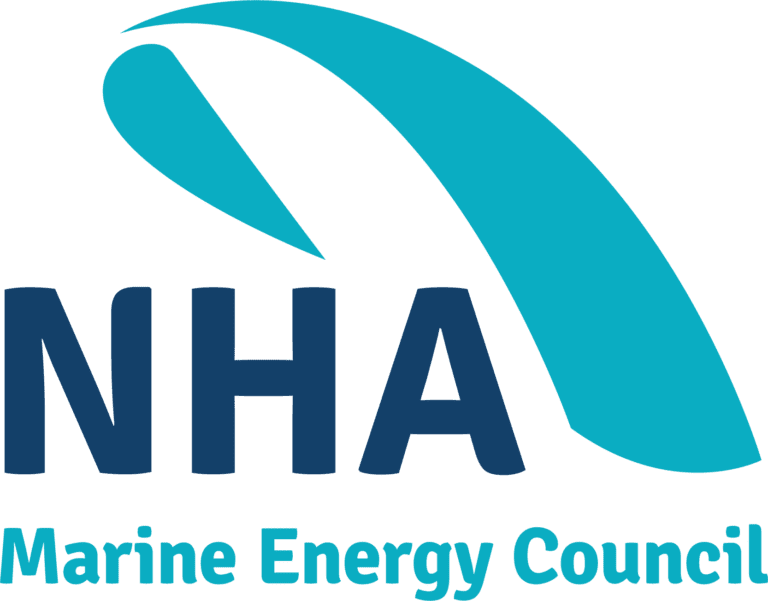
Join NHA’s Marine Energy Council
To learn more about the Council and how to join,
contact NHA Staff: Kelly Rogers
The National Hydropower Association’s Marine Energy Council (MEC) is the U.S. national trade group dedicated to promoting technologies and related services to harness clean, renewable power from significant untapped marine energy resources.
Established in 2015, the MEC works with private sector companies, academia, and government partners to:
- encourage the commercialization of marine energy technologies
- raise awareness of the industry’s considerable potential to create good-paying jobs and secure an affordable, reliable, and environmentally friendly energy future.
The MEC is actively engaged with federal policymakers to increase R&D support, reduce market barriers, and create financial incentives for technology deployment. The MEC works with its members to inform future federal programs and competitive funding solicitations, lobby for appropriations and legislation in support of the sector, and serve as a clearinghouse of critical information.
A broad and actively engaged membership is key to the MEC’s success.
Council Leadership
2024 Council Co-Chairs
- John Ferland, ORPC, Inc.
- Sam Quinn, Pacific Ocean Energy Trust
- Brenda Langley, Oregon State University / Pacific Marine Energy Center (PMEC)
2024 Council Vice Chair
Kristi Terrasa, C-Power
Council Working Groups
To learn more about the Council and how to join, contact NHA Staff: Kelly Rogers
NHA MEC Membership Includes
